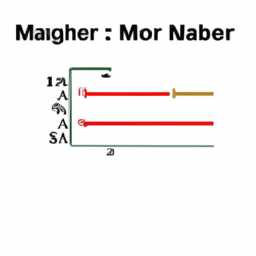Garden Hose - GalMin How Many
How Many Gallons Per Minute Garden Hose
How Many Gallons Per Minute Do Garden Hoses Discharge?
Gardening is an activity that presents people with ample opportunities for entertaining creativity while also allowing them to share in the joy of nature. In order to make gardening a productive experience, it is vital to understand how many gallons per minute your garden hose releases when in use. With the right understanding of how many GPM your particular garden hose can discharge, it's possible to plan out your garden and deploy irrigation solutions that will help keep your garden healthy and vibrant throughout the year. In order to provide a better understanding of garden hoses and the GPM discharge associated with them, we've put together this helpful article that explains GPM, the factors that influence it, and several other related topics.
What is GPM?
Gallons Per Minute (GPM) is the unit used to measure the amount of water flowing out of a garden hose. This quantity is important because it gives gardeners an idea of how much water their setup can provide for watering their plants and managing their irrigation needs. It's also a good way to measure the flow of water from a garden hose, and can be used as an estimate of how long it will take to fill a bucket or water a specific part of the garden.
Factors That Affect GPM in a Garden Hose
A variety of factors can influence GPM in a garden hose, and include everything from the width of the hose, the material it is made of, and the kind of nozzle attached to the end of the hose. The flow of the water also depends on the pressure of the water source, the length of the hose, and the angle at which it is being used. With all these variables taken into account, it can be difficult to determine exactly how much GPM a garden hose is able to produce.
Features of Garden Hose
The type of garden hose you are using can have an impact on the GPM. Hoses that are made from different materials such as rubber or nylon can affect the flow of water. The width of the hose, typically in inch or 5/8 inch diameters, also plays a role. Thicker hoses can provide more water flow than thinner hoses.
Length of Garden Hose
The length of the garden hose will also influence the GPM. Generally, longer hoses will produce less GPM than shorter hoses, as the pressure of the water has to be maintained over a longer distance.
How Many GPM Does a Typical Garden Hose Release?
The amount of GPM that a garden hose releases can vary depending on all the factors mentioned above, and as such it's impossible to give one definitive answer to the question. On average, however, garden hoses with standard inch diameters can generally release anywhere from 2 to 5 GPM.
Hose Nozzles and GPM
The type of nozzle attached to the end of the garden hose can also play an important role in GPM. Nozzles with larger openings are able to discharge more GPM than those with smaller openings, and some even come with adjustable settings that can be used to dial in how much GPM is being discharged.
Final Word
Understanding the GPM of a garden hose is an important part of managing a garden and planning out irrigation solutions. Although it can be difficult to accurately determine a specific GPM, having an idea of the variables that can affect it can help gardeners plan out their setup more effectively and ensure that their garden gets the best care possible.
Remember, when it comes to hosing your plants with the right amount of water, knowledge is key! Armed with the information provided above, you can make sure that your garden hose is properly sized and set up to provide your plants with the best possible care year round.

Previous Page
